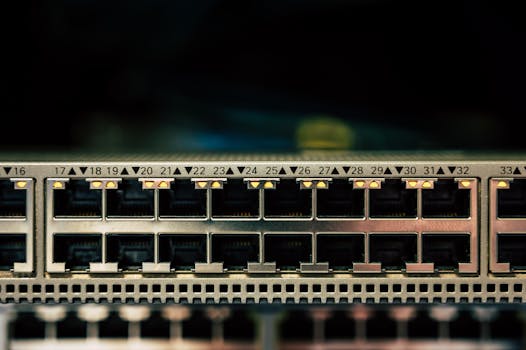From Copper to Fiber: The Revolution of Internet Infrastructure in Africa – Transforming the Continent’s Digital Landscape

From Copper to Fiber: The Revolution of Internet Infrastructure in Africa
From Copper to Fiber: The Revolution of Internet Infrastructure in Africa is a significant milestone in the continent’s digital transformation journey. The shift from traditional copper-based networks to modern fiber optic technology is revolutionizing the way Africans access and utilize the internet, opening up new avenues for economic growth, education, and social development. This revolution is not just about upgrading the infrastructure; it is about transforming the socio-economic fabric of the continent.
Introduction to Africa’s Digital Landscape
Africa, with its vast and diverse landscape, has been on a rapid path of digital transformation over the past decade. The introduction and proliferation of mobile phones and the internet have been instrumental in bridging the gap between Africa and the rest of the world. However, despite this progress, the continent still faces significant challenges in terms of internet penetration and the quality of internet services. The existing copper-based infrastructure, which has been the backbone of internet services for decades, is now proving to be a bottleneck in the quest for faster, more reliable, and more expansive internet coverage.
The Copper to Fiber Transition
The transition from copper to fiber optic cables is a critical step in addressing the challenges facing Africa’s internet infrastructure. Fiber optic technology offers several advantages over traditional copper cables, including higher bandwidth, faster speeds, and greater reliability. This transition is crucial for supporting the growing demand for data-driven services and applications, which are essential for economic development and social progress. Companies and governments across Africa are investing heavily in the deployment of fiber optic networks, both undersea and terrestrial, to enhance connectivity and expand access to the internet.
Benefits and Opportunities
The shift to fiber optic technology presents numerous benefits and opportunities for Africa. Enhanced connectivity will facilitate the growth of e-commerce, online education, and telemedicine, among other digital services. It will also support the development of innovation hubs and technology parks, fostering entrepreneurship and job creation. Furthermore, improved internet access will enable more people to participate in the global digital economy, contributing to poverty reduction and economic empowerment. The increased bandwidth and speed provided by fiber optic cables will also support the adoption of emerging technologies such as cloud computing, the Internet of Things (IoT), and artificial intelligence (AI), further accelerating digital transformation.
Challenges and Future Directions
Despite the potential of fiber optic technology to transform Africa’s internet infrastructure, there are challenges that need to be addressed. The high cost of deploying fiber optic cables, especially in rural and remote areas, is a significant barrier. Additionally, the lack of regulatory frameworks and policies to support the development of internet infrastructure in some countries hinders progress. To overcome these challenges, there is a need for collaborative efforts between governments, private sector companies, and international organizations to invest in infrastructure development and create enabling environments for digital growth. Furthermore, initiatives to promote digital literacy and develop local content are essential for maximizing the benefits of improved internet access.




